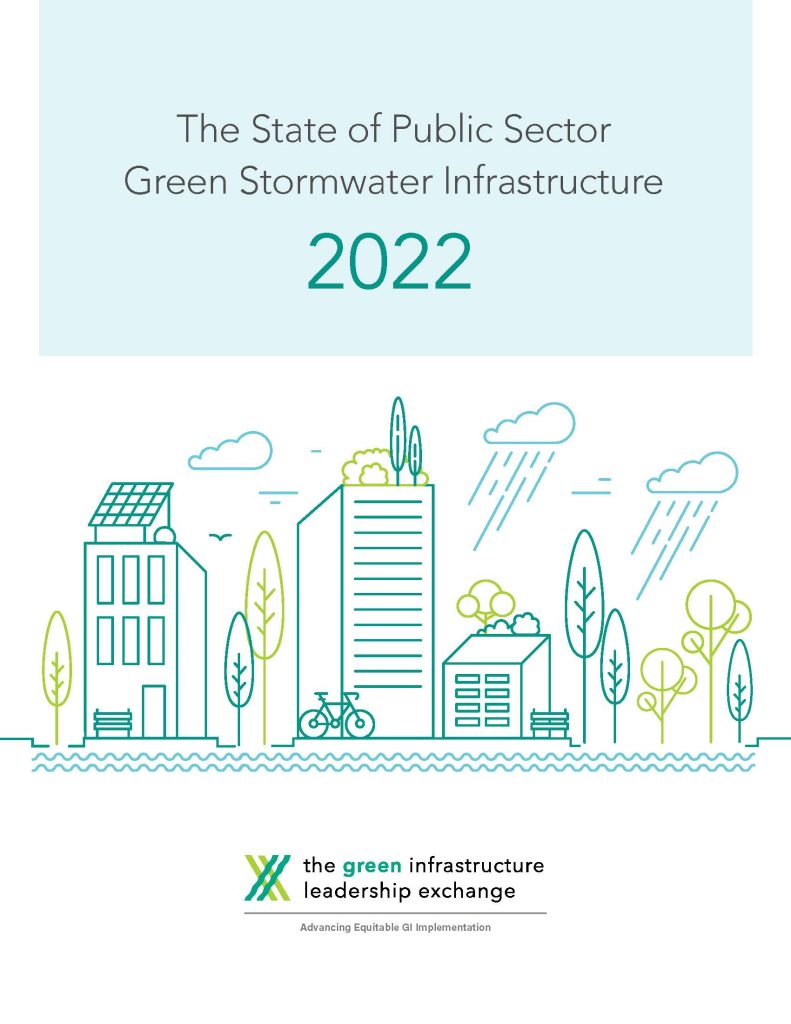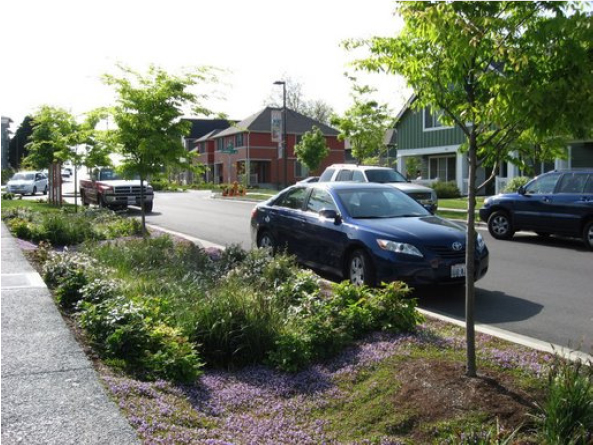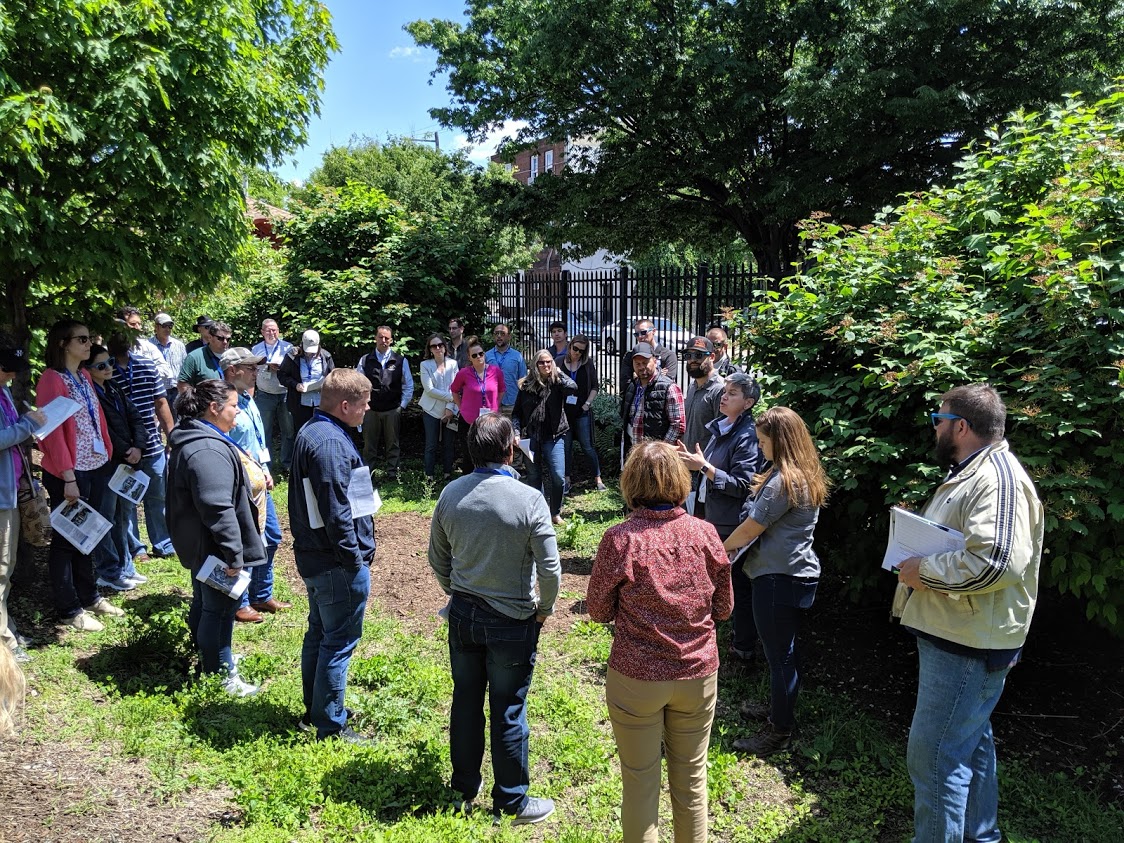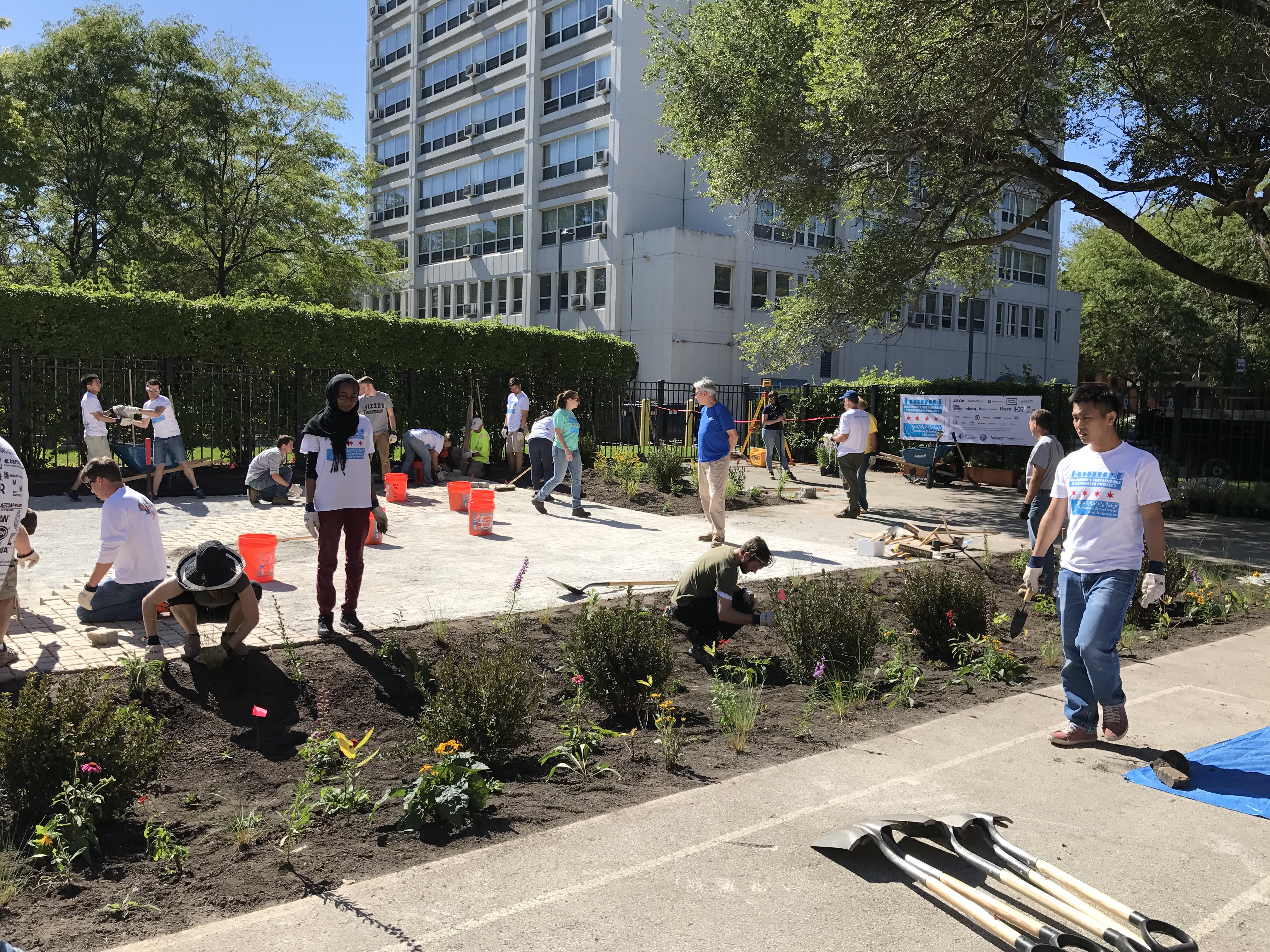Public-sector organizations set development policies, enforce water quality regulations, and greenlight projects. This gives them a unique opportunity to build momentum around green infrastructure practices whether their jurisdiction covers a small town or an entire country. Seeking to better understand how these governments, watershed agencies, and other decision-makers regard and adopt green infrastructure, the Green Infrastructure Leadership Exchange (Towson, Maryland) recently published its inaugural State of Public Sector Green Stormwater Infrastructure report.
The 100-page report details findings from a survey of 52 public-sector stormwater management organizations across the U.S. that serve approximately 44.5 million people in total. It establishes a national-level dataset that illustrates how the public sector currently uses green infrastructure, identifies remaining barriers to further implementation, celebrates successes, and helps jurisdictions of all sizes unlock green infrastructure’s potential to meet multiple community goals.
“We are excited to provide these new insights into the state of green infrastructure implementation in the public sector,” said Barbara Hopkins, Green Infrastructure Leadership Exchange Executive Director, in a release. “We believe this report will be a valuable resource for communities looking to expand their green infrastructure efforts while centering community and ensuring long-term sustainability.”
Changing Regulations Drive Investment

Although the frequency with which public-sector stormwater organizations choose green infrastructure solutions over traditional pumps and pipes varies widely, report findings suggest that green infrastructure adoption is on the rise. In fiscal year 2022, capital expenditures on green infrastructure among survey respondents ranged from zero dollars to more than USD $90 million, with a median spend of USD $280,000.
Operations and maintenance costs for green infrastructure also ran the gamut, representing a median spend of USD $100,000, but as high as USD $5.3 million. About 61% of respondents indicated that their green infrastructure spending has increased at least somewhat during the last 5 years, with several reporting significant increases.
These organizations reported that meeting regulatory requirements for water quality was by far the most common driver for greater investment in green infrastructure. Nearly 90% of respondents ranked regulations that specifically promote green infrastructure as an acceptable compliance option as a “very important” motivator for investment. Meeting regulations outpaced such priorities as enhancing flood resilience, mitigating pressure on aging drainage and wastewater systems, and improving residents’ quality of life.
Report authors describe that this finding demonstrates that regulators are increasingly acknowledging the value of green infrastructure as a viable approach to water quality improvement. Likewise, stormwater organizations are eager to take advantage of this increasing regulatory flexibility.
Remaining Barriers
However, significant barriers to green infrastructure adoption remain in the regulatory space. Many respondents reported technical and institutional hurdles that decrease their confidence in green infrastructure, such as insufficient data on green infrastructure’s return on investment given its site-specific nature, a lack of design standards provided in codes and ordinances, and a lack of coordination among different types of green infrastructure-minded agencies. In some cases, state regulations did not explicitly specify green infrastructure as an acceptable approach to meet water quality requirements.
Survey results uncovered a range of additional insights, including that
- strong green infrastructure champions, such as elected officials and senior government/agency personnel, can play a critical role in unlocking funding for green infrastructure and supporting policy changes that support green infrastructure;
- innovative procurement approaches for green infrastructure planning, design, and delivery are growing in popularity, such as design-build contracts, public-private partnerships, and incentive programs;
- the broader U.S. green infrastructure sector suffers from a lack of standardization, including differing metrics to measure costs and performance, which hinders the usefulness of case studies and demonstration projects; and
- many respondents struggle to effectively incorporate environmental equity into their green infrastructure programs.
Poised for Further Growth
During the next 5 years, survey results indicate that public-sector green infrastructure is poised for additional growth.
73% of respondents predicted at least a modest increase in annual green infrastructure spending during the next 5 years as compared to the 2022 fiscal year, 16% of which predicted a significant spending increase.

Respondents also signaled efforts to expand green infrastructure coverage in specific areas in the coming years, due in part to the spread of emerging programs that incentivize green infrastructure development on private property.
In line with existing trends, publicly owned roadways are expected to be the most common location for new green infrastructure during the next 5 years, with 69% of respondents indicating plans to increase expenditures in these settings. Similarly, more than 50% of respondents expected to increase green infrastructure coverage on both public and private parcels through retrofit initiatives.
The report recommends a range of actions available to local stormwater agencies, nonprofit groups, governments, and other organizations to help promote public-sector green infrastructure adoption.
Public stormwater agencies of all sizes, according to the report, should focus on building green infrastructure-focused partnerships with other agencies in their region as well as elected officials. They should leverage these partnerships to influence simple policy actions that create new flexibility for green infrastructure. For example, working to classify green infrastructure as a capital investment in local codes can unlock new municipal funding sources, and requiring green infrastructure inclusion in new construction and redevelopment projects would spur its use.
Nonprofit groups should work to facilitate peer exchange regionally by supporting standardized performance metrics, units of cost, and terminology. State and federal governments can formalize this process further by codifying industry consensus around these standards into regulations and best practices.
Read the full report, The State of Public Sector Green Stormwater Infrastructure 2022, and explore additional insights from the survey via the Green Infrastructure Leadership Exchange’s State of the Field Data Dashboard.
Top image courtesy of Brigitte Werner/Pixabay

ABOUT THE AUTHOR
Justin Jacques is editor of Stormwater Report and a staff member of the Water Environment Federation (WEF). In addition to writing for WEF’s online publications, he also contributes to Water Environment & Technology magazine. Contact him at jjacques@wef.org.







